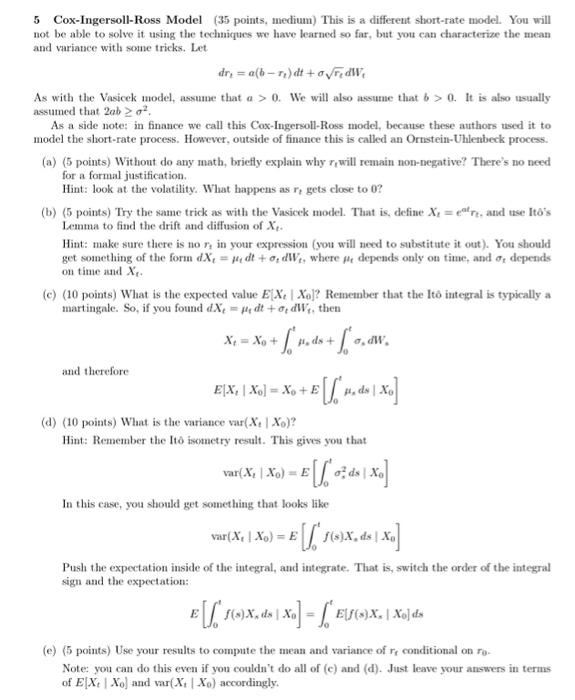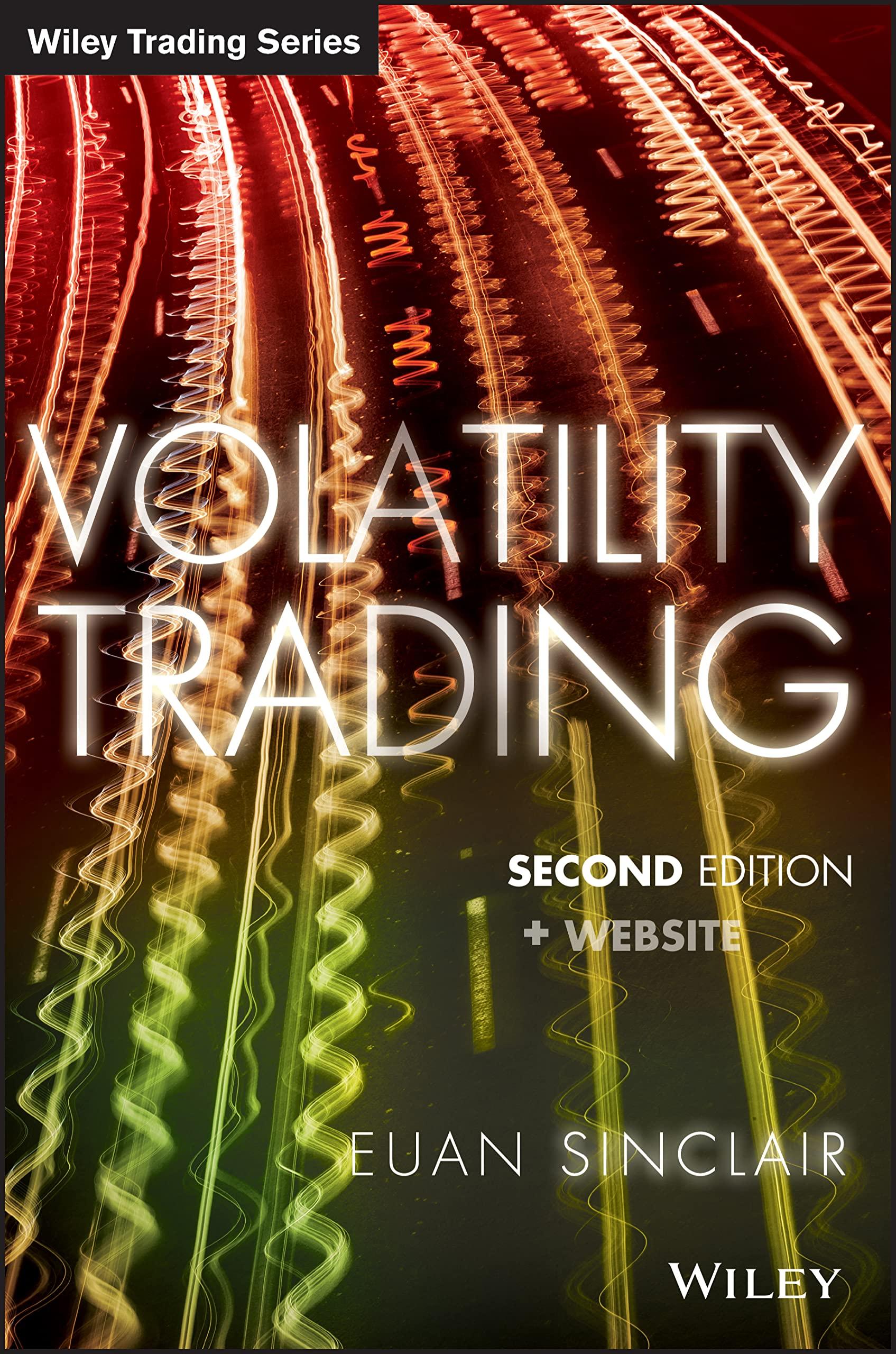Answered step by step
Verified Expert Solution
Question
1 Approved Answer
5 Cox-Ingersoll-Ross Model This is a different short-rate model. You will not be able to solve it using the techniques we have learned so far,
5 Cox-Ingersoll-Ross Model
This is a different short-rate model. You will not be able to solve it using the techniques we have learned so far, but you can characterize the mean and variance with some tricks. Let drt = a(brt) dt + ort dWt As with the Vasicek model, assume that a > 0. We will also assume that b>0. It is also usually assumed that 2ab 0. As a side note: in finance we call this Cox-Ingersoll-Ross model, because these authors used it to model the short-rate process. However, outside of finance this is called an Ornstein-Uhlenbeck process. (a) (5 points) Without do any math, briefly explain why r, will remain non-negative? There's no need for a formal justification. Hint: look at the volatility. What happens as rt gets close to 0? (b) (5 points) Try the same trick as with the Vasicek model. That is, define Xt = eat rt, and use Ito's Lemma to find the drift and diffusion of Xt. Hint: make sure there is no rt in your expression (you will need to substitute it out). You should get something of the form dXt = pt dt+otdWt, where ut depends only on time, and ot depends on time and Xt. (c) (10 points) What is the expected value E[Xt| Xo]? Remember that the It integral is typically a martingale. So, if you found dXt = t dt+otdWt, then and therefore Lunds + fo Xt = Xo + E[Xt| Xo] (d) (10 points) What is the variance var(Xt | Xo)? Hint: Remember the It isometry result. This gives you that Xo+ E var(Xt | Xo) E E[Hads Xo] | In this case, you should get something that looks like var (Xt| Xo) = E s dWs t [[ 0 ds | Xo] E [ J(s)X, ds | Xo] E f(s)X, ds | Xo Push the expectation inside of the integral, and integrate. That is, switch the order of the integral sign and the expectation: | Xo] = [B 0 * Elf(s)X, | Xo] ds (e) (5 points) Use your results to compute the mean and variance of rt conditional on ro. Note: you can do this even if you couldn't do all of (c) and (d). Just leave your answers in terms of E[X | Xo] and var(Xt| Xo) accordingly.

Step by Step Solution
There are 3 Steps involved in it
Step: 1

Get Instant Access to Expert-Tailored Solutions
See step-by-step solutions with expert insights and AI powered tools for academic success
Step: 2

Step: 3

Ace Your Homework with AI
Get the answers you need in no time with our AI-driven, step-by-step assistance
Get Started


